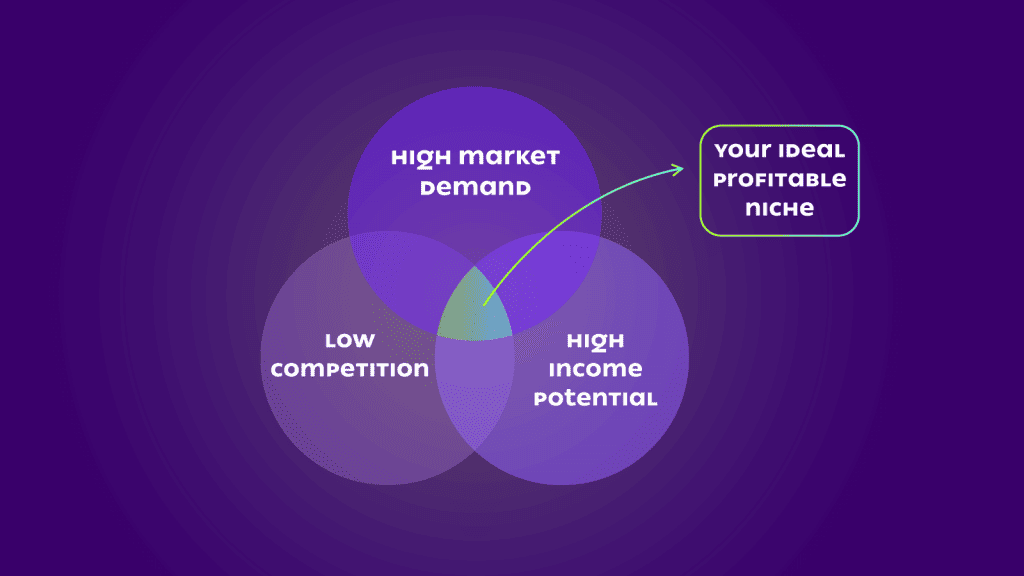How to Attract Clients: 11 Tips for Getting Customers
Attracting clients is essential for any business. With more clients, you can grow your revenue, impact more people with your products or services, and build the foundation for long-term success. But competition is fierce, and cutting through the noise to connect with qualified prospects takes strategy and effort. This comprehensive guide covers vital principles, proven tactics, and real-world examples to help you attract clients for your business.
Table of Contents
Know Your Ideal Client

Before attracting clients, you must first understand your ideal clients. Ask yourself:
- What industry(ies) do they work in?
- What seniority level or roles do they have?
- What company size do they typically work for?
- What challenges are they facing that you can help solve?
- What value do they expect to gain by working with you?
Paint a detailed picture of who you want to serve. This helps you tailor every part of your client attraction strategy specifically for them.
Craft Detailed Buyer Personas
Expand on your ideal client by developing detailed buyer personas. These are semi-fictional representations of your ideal customers based on market research and accurate data about customer demographics, behaviour, motivations, and goals.
Some key elements to include for each persona:
- Basic stats: job title, industry, seniority level, company size/type
- Goals and challenges: What business objectives are they trying to achieve? What pain points stand in the way?
- Behaviour patterns: Where do they spend time online? How do they look for solutions and make buying decisions?
- Marketing response: What messages/offers resonate best with them? On what channels?
Data from your existing client base can inform these personas. However, you can supplement this with market research through surveys, interviews, focus groups, and analysis of your competitors’ clients.
Detailed personas help you tailor every part of your client attraction plan, guiding decisions on positioning, messaging, lead generation tactics, and sales conversations.
- Andrews, Stormie (Author)
- English (Publication Language)
- 181 Pages – 07/10/2020 (Publication Date) – Yokel Local (Publisher)
Clarify Your Value Proposition
With ideal buyer personas clarified, the following critical piece is developing a compelling value proposition. This summarises the tangible value and benefits you provide target clients.
Ask yourself:
- What business challenges do you help solve? Be specific.
- How do you solve those challenges better than alternatives?
- What outcomes and results can you deliver to clients?
For example, a consultant may say:
“I help startup founders validate new product ideas rapidly through cost-effective market testing and analytics. My data-driven approach shortcuts the trial-and-error process, helping founders achieve product-market fit faster.”
A strong value proposition establishes you as an expert in addressing a specific need clients care about. This builds trust and credibility so that you can deliver on your promises.
Quantify Value
Where possible, quantify the value you provide through metrics like:
- Increased revenue
- Cost savings
- Improved productivity
- Faster results
- Higher success rates
This makes the value more tangible. For example, an agency may say:
“By optimising your marketing automation workflows, we help B2B tech firms generate up to 35% more pipeline requests and cut cost-per-lead by 25% within six months.”
Choose Your Niche

It’s tough to attract clients when you try to be everything for everybody. The more focused your niche, the easier it is to drill down on positioning, messaging, lead generation tactics and partnerships tailored to those clients.
Common ways to narrow your focus include:
- Industry verticals – Finance, healthcare, manufacturing
- Departments – Marketing, HR, sales, IT
- Company size – Enterprise, mid-size, small business
- Geographies – Boston area companies, Midwest ecommerce brands
Think through the segments where you’re best positioned to attract clients based on:
- Your expertise and experience
- Where you have existing relationships
- Types of clients you enjoy working with most
- Segments with the most significant growth opportunities
You can expand into additional verticals as you gain traction in your initial niche.
Position Yourself as an Expert
Prospects need to recognise you as an expert capable of helping them achieve their goals before they buy your product or hire you as a consultant. There are two parallel tracks to establishing expertise:
1. Develop Subject Matter Expertise
- Master your chosen topic inside and out
- Continually expand your skills and knowledge
- Understand client's business needs in context
2. Showcase Your Expertise Externally
This is where expertise marketing comes in – using content, media exposure, speaking engagements and other visibility tactics to showcase what you know.
Create Educational Content to Attract Clients
Blogs, videos, podcasts, and whitepapers allow you to share your subject matter expertise in an educational format. This helps prospects discover you and builds familiarity with your knowledge before sales conversations start.
Tips for developing expertise content:
- Solve specific problems – Organise content around challenges your personas face
- Offer best practices- Provide frameworks, step-by-step advice, case studies
- Educate, don’t sell – Focus is building trust, not pushing products
- Promote content aggressively – Through paid ads, organic search, email, social media and partnerships
- Hollins, Peter (Author)
- English (Publication Language)
- 194 Pages – 06/20/2022 (Publication Date) – Independently published (Publisher)
Get Published and Interviewed in Media Outlets
Media exposure is hugely valuable, lending 3rd party credibility from trusted publishers.
Focus on getting featured in:
- Industry publications your clients read
- General business outlets
- Relevant websites based on client interests
Proactively pitch editors on trends in your niche, data-led insights, lessons from client projects, and your point of view as an industry expert. Make yourself invaluable as a source.
Speak at Industry Events or Host Webinars
Speaking allows you to reach highly targeted audiences efficiently. And it establishes credibility by having event organisers validate your expertise in choosing speakers.
Identify relevant conferences, association meetings, and company events—craft speaking proposals around insights that resonate with those audiences precisely.
Webinars are another efficient channel using your existing audience, partners’ media, or paid promotion.
In any format, focus presentations on educating rather than a sales pitch. Content should build familiarity and trust with your knowledge.
Network With Influencers in Your Industry

Partnerships with credible influencers provide social proof and expanded reach. Getting endorsements, referrals and mentoring from recognised industry leaders lends authority to the association.
Ways to connect with influencers:
- Follow their work – Subscribe to their blog and listen to their podcasts. Understand their point of view and who they aim to serve. Look for shared missions or synergies.
- Comment on their content – Share thoughtful feedback, ask intelligent questions, and contribute to the conversation instead of just taking value.
- Connect on social media – Share and interact with their updates. Twitter is great for public engagement with influencers.
- Introduce via email – Personalised outreach explaining why you respect their work and would value getting acquainted. Short and casual is best.
- Meet at events – Conferences, association gatherings, local networking meetups, etc. Set a goal to engage a few influencers to start a relationship—no hard sales pitch.
- Explore co-marketing – Content collaborations, cross-promotions, guest contributors and other partnerships where you can provide mutual value.
Not every outreach will get a response from busy influencers. Persistence pays off. Providing value, building authentic relationships, and influencer marketing can be fruitful.
Develop Referral Partnerships
Referrals from other companies lend credibility better than almost any other channel. And they provide built-in social proof that you can deliver results for similar businesses referred to you.
Explore partnerships with:
- Suppliers and vendors serving your target clients
- Consultants in complementary specialities (legal, HR, IT services)
- Clients where it’s win/win to tap into each other’s network
To encourage referrals and introductions, communicate the partner profile(s) you want to connect with. Make it easy for partners by providing content, email templates or other collateral they can pass along to warm up referrals before your first outreach.
Proactively look for opportunities to refer potential clients to partners as well. This reciprocity incentivises them to continue thinking of you for referrals.
Formalise Referral Agreements
You can structure more formal referral partnerships using incentives. Offer a finder’s fee, revenue share or some other consideration to partners who connect you with clients that turn into business.
Be transparent on referral terms and have a tracking process to ensure partners get credit for their introductions. Following up with metrics also keeps you at the top of your mind for future referrals.
Use Lead Magnets to Catch Prospects’ Attention

Lead magnets incentivise visitors to share their contact info with you in exchange for content. This allows you to capture leads you can nurture into sales conversations.
Compelling lead magnets include:
- Cheat sheets
- Templates
- Assessments
- Checklists
- Swipe files
- Resource guides
- Calculators
Develop tools, templates and resources that help prospects do their jobs better. The value exchange earns their contact info.
Promote your lead magnets through:
- Paid ads targeted using your personas
- Calls to action in content (blogs/videos)
- Website banners and popups
- Email nurture streams
- Social media posts
- Direct outreach campaigns
For gated assets, only ask for essential contact details – name, email, company name or role. You’ll gather more data during nurturing.
Follow a Structured Lead Nurturing Process
Once you’ve generated leads, you must nurture them over time to convert interest into sales. This means ongoing valuable communication that builds familiarity and trust.
A typical nurturing sequence includes:
- Lead magnet access – Thank prospects for downloading, encourage sharing feedback
- Usefulness follow-ups – Make sure the tool is providing value, and offer additional tips for getting the most from it
- Problem awareness – Share educational content about common challenges your niche faces
- Solution education – Provide info on approaches to tackle those problems and ways you can help
- Calls to action – Move leads ready to have a sales conversation into your funnel
Track metrics like open rates, content consumption, and sales velocity by lead source. Optimise your nurturing path and copy for each reference accordingly.
Well-nurtured leads that consume your content convert to sales at much higher rates.
Leverage Retargeting Ads

Retargeting (or remarketing) ads keep your brand and messaging in front of prospects as they visit other sites across the web. This reinforces brand awareness and interest when they're ready to consider you again.
For example, someone may read one of your blogs but not be ready to talk. Retargeting gives you opportunities to stay top of mind.
Best practices for retargeting ads:
- Pixel website visitors – Install a Facebook pixel, Google tag manager, LinkedIn insights tag, etc, on your site to track visitors
- Create custom audiences – Segment visitors based on pages viewed, content consumed, activity level, etc
- Define clear goals per audience – What action do you want visitors in each segment to take next?
- Tailor creative per goal – Incorporate messaging and imagery that relates specifically to what you want that custom audience to do
- Continually test performance – Evaluate click-through rates and conversion rates to optimise
Done right, retargeting keeps you in front of the right people, with the right message, at scale.
Target Companies Proactively Through Direct Outreach
Beyond inbound tactics like content and ads, sales development representatives (SDRs) can identify and engage promising targets through proactive outreach. This allows you to expand your reach beyond who organically finds you.
Outbound outreach tactics include:
- Emailing personalised notes with valuable, relevant content
- Following up by phone to confirm relevance and schedule intro calls
- Connecting through LinkedIn to establish a relationship before asking for a meeting
- Securing time on colleagues’ calendars when a project stakeholder is unavailable
- Running multi-touch nurture sequences with helpful resources to earn engagement
SDR outreach aims to secure visibly high-quality conversations for salespeople rather than immediate deals. Nurturing promising contacts patiently to convert interest into introductions.
Analyse What's Working and Optimise

With so many potential strategies for attracting clients, you must be rigorous about tracking results and doubling down on what works best.
Analyse performance and ROI across activities using metrics like:
- Inbound interest – Website visitors, content downloads, inbound inquiries
- Sales velocity – Time and steps from lead to closed deal
- Channel contribution – Lead volume and conversion rate by channel
- Program efficiency – Cost, time spent, and pipeline generated per program
Build reporting to monitor this data regularly. And use insights to inform decisions on where to invest more compared to initiatives delivering low results.
Testing and optimisation should be continual. Explore new titles for your top-performing content, change up the offers in lead nurturing emails, tweak direct mail copy, and update campaign targeting parameters—regular small experiments compound results over the long run.
- Harding, Ford (Author)
- English (Publication Language)
- 336 Pages – 03/01/2008 (Publication Date) – Adams Media (Publisher)
Conclusion
Attracting new business takes strategy, persistence, and knowing your niche audience intimately. But it is worth the effort. With more clients, you increase impact, revenue, referrals and long-term success compounding over time.
The blueprint above gives you a comprehensive playbook to build sustainable momentum:
- Know who you serve and what they care about
- Position your expertise to establish trust
- Forge partnerships to grow to reach
- Create valuable lead magnets to capture contacts
- Nurture leads until sales-ready
- Stay top of mind through retargeting
- Expand your pipeline through outreach
- Relentlessly track results and optimise
With the proper foundation of knowledge, relationships, and visibility, attracting clients transitions from a sales job to more of an inbound effort over time. Prospects seek you out as the recognised solution to their needs. They are allowing you to focus on delivering incredible value at scale.
So, tackle the work upfront to build awareness, trust and authority. Consistently nurture your pipeline. And enjoy the compounding benefits of increased advocacy and referrals over the long term.
Follow these best practices while customising execution for your specific niche, and you’ll attract more clients you want to work with.
Frequently Asked Questions
What are the most important metrics I should be tracking for client attraction campaigns?
The key metrics to monitor are inbound interest (website traffic, content engagement), sales velocity from lead to closed deal, channel contribution to pipeline and deals closed, and program efficiency based on costs compared to pipeline and revenue generated. These give visibility into what activities are working or need to be optimised.
As a solopreneur or small agency, what are my best options for lead generation without a big budget?
Content marketing through an educational blog, conducting webinars, networking with potential referral partners, and manual direct outreach to targeted companies are all solid lead-gen options for small businesses. Grassroots tactics that leverage your expertise work better than buying broad-paid traffic. Start targeted and expand thoughtfully over time.
What tools do you recommend for tracking website visitors and automating much of the lead follow-up process?
Google Analytics provides website visitor tracking for free. Many CRMs like HubSpot also have built-in analytics. For automating nurture sequences, a CRM like ActiveCampaign, Drip or ConvertKit integrates email marketing landing pages, and some have built-in sales automation. Zapier also connects disparate marketing and sales tools.
As a consultant or agency, what’s the best way to showcase expertise and social proof when I have a few existing clients?
Proactively reach out to past colleagues, employers, or clients from earlier in your career to get testimonials for your services. Offer to provide free project work or strategy audits for 1-2 nonprofits or early-stage companies in exchange for being able to reference their brand and results. And emphasise case studies and programs you led or created at past companies before going independent.
What tactics work well for getting solid referrals from existing clients?
Set the expectation during account onboarding that you’ll ask happy clients for introductions to others they think could benefit. Check-in quarterly to ask who they know you should connect with. Formalise referral structures where clients get a revenue share or other incentive for connections that turn into business. And get specific on target profiles so clients know exactly who and how to connect with you.
Last update on 2024-04-28 / Affiliate links / Images from Amazon Product Advertising API



